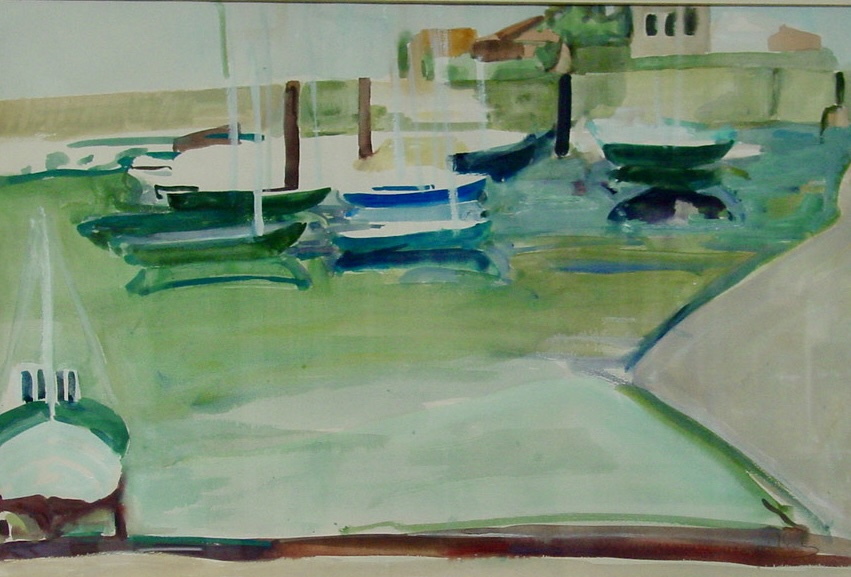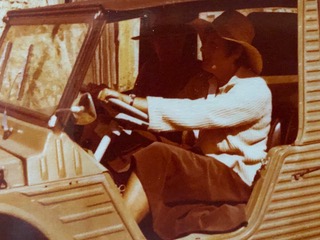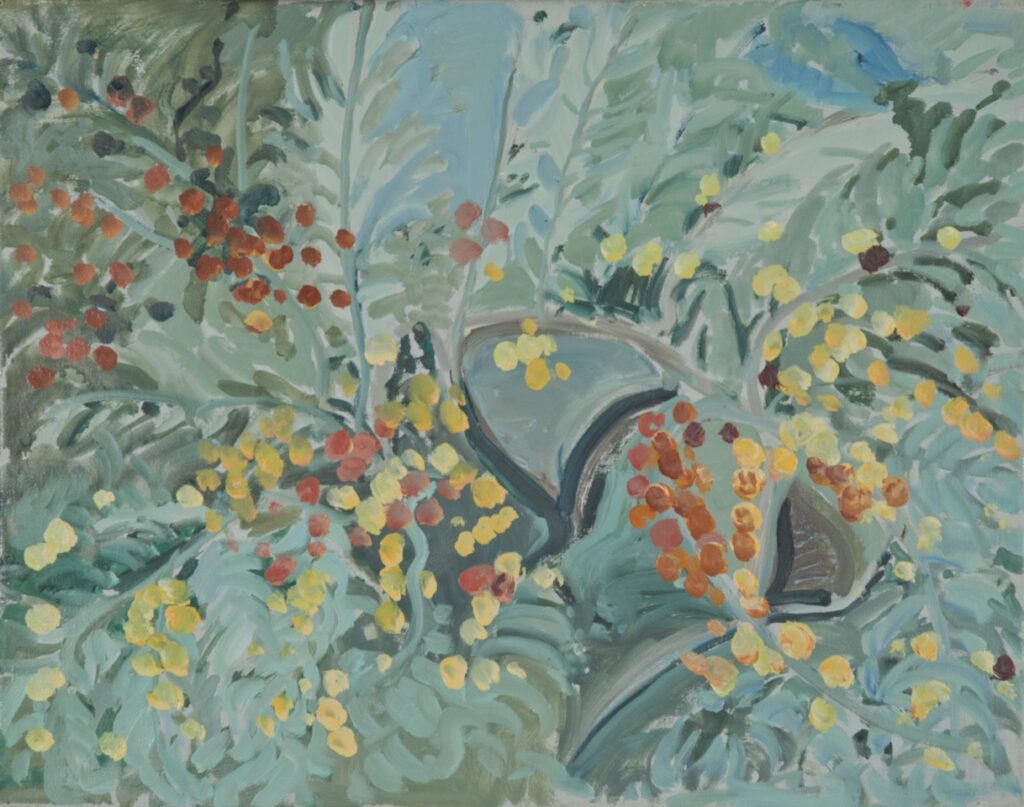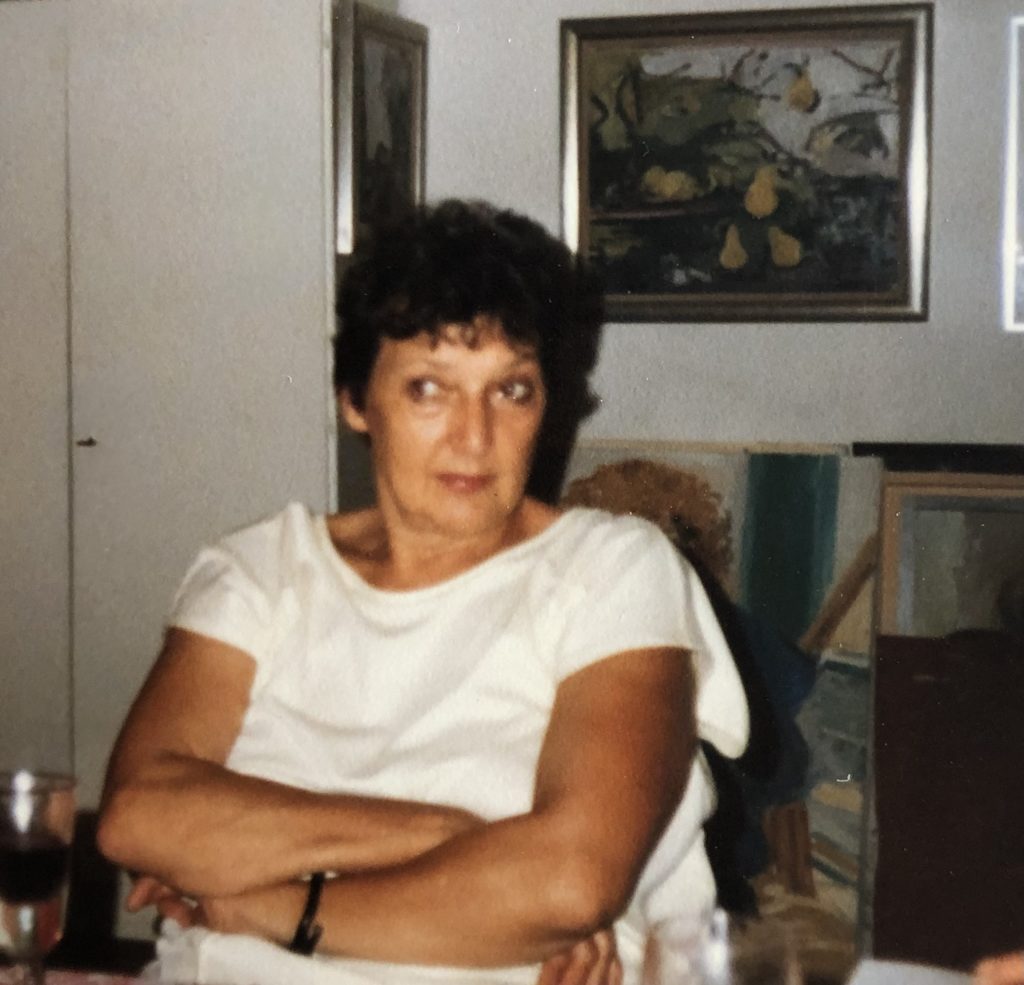Amsterdam, the Netherlands, 1933 – 2011
Annemarie Eilers comes from a family of art lovers who either published books like her French grandfather Emile Delagrange or dealt in art like her Dutch grandfather Petrus Christiaan Eilers and her father Piet Eilers, both working at E.J. van Wisselingh & Co on Rokin. Van Wisselingh exhibited works by George Hendrik Breitner, Marius Bauer, Willem de Zwart and the French painters Jean Corot and Charles-Francois Daubigny. Later on they also sold works by Vincent van Gogh, Pablo Picasso and Henri Matisse.
Early School Years
Her mother spoke French with Annemarie until she went to a Dutch kindergarten she was not able to understand anyone. She learned early on what it was like to be different.
Her schooling during World War II wasn’t entirely according to the rules, and things didn’t go well at the Baarns Lyceum either. Her father decided to send her to a boarding school in England, where she had to stay for a year because it was paid for, but the other foreign girls didn’t return after Christmas. Eilers learned to play the piano and, above all, paint there; the seed was sown. Afterward, she went to a school in Paris and lived with her French grandmother and cousin. This is how she mastered languages.

The beautiful clear water is transparent in this harbour, an invitation to swim in it. Annemarie painted harbours in Bretagne and other parts in France.
– Harbour, Gouache, 86×62 cm
National Academy of Fine Arts in Amsterdam
At nineteen, Eilers entered the Rijksakademie van Beeldende Kunsten in Amsterdam. When a male nude model appeared, she was startled and slammed the door shut. After that, she had to endure it. During her studies at the Rijksakademie from 1952 to 1955, she took drawing lessons from Professor Gé Röling and painting from Professor Jan Wiegers. From Wiegers, she learned to use unusually bright colors. She met Dora Esser-Wellensiek there, and they remained lifelong friends.
Her husband, Ek van Zanten, had won the Prix de Rome in 1955 and had gone to Rome; she followed him with her newly born son. Two more children followed later. Upon returning to the Netherlands, she and her family lived on Zomerdijkstraat for several years. Together with Dora, she painted watercolors in the Netherlands and France, and they took a trip together to Corfu, Greece.
She developed her style in an expressionist style that, over the years, adopted a more conservative color palette. She imbued her subjects with tremendous dynamism. These included white-capped waves, turbulent clouds, boats tilted in strong winds, people dancing, and people in canoes. She worked extensively outdoors in nature and could work in all weather conditions. Later, she enjoyed the luxury of working from her car. She immediately knew what she wanted to paint and in which colours. She particularly admired the work of Henri Matisse and Nicolas de Staël.

Annemarie Eilers working from her car
She taught figure drawing at the Amsterdam Fashion Academy and also taught drawing at the Vrije Leergangen (Free Courses) of the Vrije Universiteit in Amsterdam. Eilers was a member of Arti et Amicitae in Amsterdam and of the Association of Bussum Visual Artists. She also served on the board of the Art Lending (SBK) in Hilversum and Amsterdam.
Gallery Imago
Galerie Imago was founded by Eilers together with Hannie Halma. The gallery on Nieuwe Zijdsvoorburgwal exhibited work by artists including Geer Steyn and Ida Kleiterp, both from Zomerdijkstraat. She worked for the gallery in the 1980s and 1990s. Eilers exhibited extensively both in the Netherlands and abroad. She divorced Van Zanten in 1980. She has lived and worked in Naarden from 1961 to 2011.
Annette Groos wrote about Eilers’ work:
“The drawings in particular demonstrate a playful, almost frivolous ‘fun’ in observing and recording, a childlike delight in recounting what she has just experienced.”

The mimosa is painted like a wild big forest, the way Annemarie loved to see it
– Mimosa, oil on canvas
Literature
J.F. Heijbroek, E.L. Wouthuysen, Portrait of an Art Dealer. The firm of Wisselingh and his partners 1838- present, Zwolle, Waanders Publishers/Rijksmuseum Amsterdam, 1999
